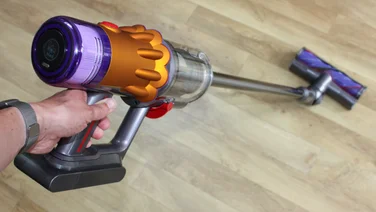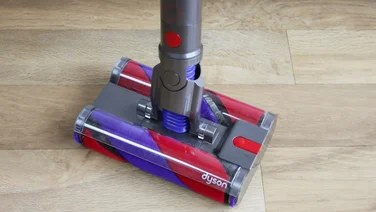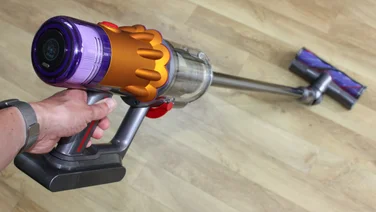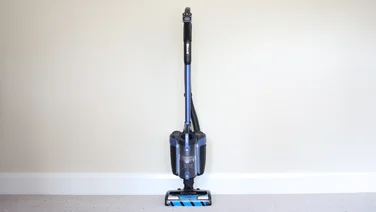To help us provide you with free impartial advice, we may earn a commission if you buy through links on our site. Learn more





Allergy Awareness Week, a scheme launched by charity Allergy UK to draw attention to all kinds of allergies and what can be done to combat them, is supported by many companies and groups, but one of the most vocal is Dyson. It is the only European appliance manufacturer with its own microbiology lab and even breeds its own dust mites in order to research how dust is spread through the home and how best to get rid it. We spoke to Toby Saville, Senior performance engineer at Dyson’s Malmsbury R&D centre, to find out what this ongoing research has revealed, and what you can do to keep your house clean and limit your exposure to allergens.

“Allergy diagnoses have shot up over the last 15 years as we gain a better understanding of what causes them,” says Saville, who has been at Dyson for 13 years and helped set up the microbiology lab. “It basically boils down to an overreaction to specific substances by the immune system.”
Once a reaction is triggered, the body produces histamine, which causes the runny nose and teary eyes we associate with allergies. You may be born with the capacity to become allergic, but aren’t automatically allergic; for an allergy to develop you need to acquire specific genes from your parents, be exposed to one or more of the allergens to which you have a genetically programmed response, and must be exposed to high levels of these allergens for a particular length of time. If you build up a significant exposure you can become over-exposed and cause the body to become allergic, even if you were fine around these substances in the past.
What causes allergens?
In the home, there are five main respiratory allergens. Mould is often overlooked, as just because you can’t see it in your bathroom it doesn’t mean your house is free of it; anywhere damp is a candidate for mould growth, which could mean an untended fruit bowl or overwatered plant. Mould can survive for centuries, and spores are released as soon as you can visibly see a build-up, meaning it quickly spreads. Pollen, the fourth most common respiratory allergen found inside the house, is “perfectly aerodynamically designed to stay in the air” and easily sticks to clothes. Dog and cat hair are the second and third most common allergens. “It’s not actually the pet hair itself that causes the allergy,” Saville explains, “but the saliva and urine that sticks to the hair.” It’s incredibly sticky, meaning you could come into contact with it at work simply by sharing an office with a dog or cat owner.
It’s the tiny Dust mite that is by far the number one cause of allergens in the home, however. Dyson has been breeding cultures of house dust mites for over a decade.
“They are quite hard to maintain,” Saville says. “Fewer than five places in the UK are dedicated to dust mite research. Ours our fed on dog biscuits and housed in bird feeders.”
There are two species of mite (American and European) and Dyson breeds both. “They like high humidity and warm temperatures, which is why they breed so much on the home.”
They live for around three to four months, and in the final month one female can lay up to 200 eggs. They don’t take long to breed, and if they have the environment and a food source they will quickly multiply.

Mites can live in bedding, sofas, carpets, and even between cracks and gaps in hard floors, meaning getting rid of your carpets isn’t the answer. They live a few millimetres down from the surface, and each of their eight legs has hooks and claws which makes them difficult to get rid of. Because they feed on human skin cells, beds are the perfect breeding ground. The average person loses up to 28 grams of skin cells per week, or as Saville puts it, “One particularly unappealing bag of crisps every seven days.”
Mites themselves aren’t harmful, but their faeces is; the resulting allergens are small enough to make it into your lungs, which if left unchecked could cause allergic reactions.
Don’t believe the hype
“So far we’ve not come up with an additional technology that has proven effective in getting rid of dust mites,” Saville said. “UV lamps simply don’t work.”
This is in response to the growing number of vacuum cleaners, and in particular dedicated mattress vacuums, appearing on the market from other manufacturers which include integrated ultraviolet bulbs, reportedly to kill bacteria and sterilise surfaces.
“UV-C light needs a clear line of sight from the bulb to the target in order to kill germs, bacteria and microorganisms. You need 30 seconds of exposure to have any hope of killing mites, but they don’t like light and hide under the surface of carpets and mattresses. A few passes with a UV-equipped vacuum cleaner isn’t going to do the job.”
Ultraviolet light is particularly harmful to human eyes, so these kinds of bulb need to be surrounded by a specific type of quartz glass to allow the right radiation to pass through but not damage our eyesight. Regular glass absorbs the radiation, and even carpet fibres and dust flakes can block it, rendering such bulbs ineffective at removing dust mite cultures.
“We’ve tested (dedicated mattress cleaners) – they do not work, they are poor vacuum cleaners and have gimmicky features.”
So what can you do?
In the bedroom, mattresses, duvets and pillows are a dust mite breeding ground so should be a real point of focus when washing and cleaning. As well as changing your sheets regularly, you should concentrate on the area next to your bed. “Don’t just make a few passes with the vacuum,” Saville says, “take a few minutes and cover the area multiple times in order to limit your exposure.”
You should also take your vacuum and go over the mattress itself, if possible as often as you change the sheets. If you do it with a clean machine, the dust you collect should be a noticeably different colour; the fine, silvery grey composition is mostly made from skin cells. Many vacuum cleaners have an optional mattress tool, which is a larger version of the stair tool optimised for wider strokes, with air channels in the sides to help make the job easier.
“Keeping pets off of beds and sofas will limit your exposure to allergens, as will grooming your pets
[outdoors]
as often as possible,” says Saville. “There’s no magical cure for pet allergies, and doctors can only stave off the inevitable with anti-histamines.”
According to Dyson, the rate of dust generation in the average home can be combated simply by increasing your vacuuming frequency. Leaving it a month between vacuums will collect between 70 and 80 per cent of the total dust build-up, but the total amount will continue to grow. The average home should be vacuumed once a week, while asthma sufferers should be aiming for two or even three times. You should move sofas, chairs, tables and beds periodically and vacuum underneath them to prevent build-up, and it’s important not to forget blinds and curtains too: just because they hang vertically it doesn’t mean they are immune to collecting dust.

Ultimately, vacuum cleaners are one of the best tools home owners have to combat allergens, and research conducted at Dyson’s R&D lab has helped the humble vacuum become even more effective than it once was. These innovations include carbon fibre brush bars, which are designed to trap and collect dust, rather than kick it up into the air as you vacuum, and Dyson’s Cinetic cyclone technology which was designed specifically to deal with the types of dust encountered in most homes. Also, vacuums with this technology should help limit allergen exposure by eliminating the need to regularly wash filters.
Whether you own a Dyson or a vacuum from another manufacturer, however, the message is clear. Regularly and thoroughly cleaning your house does more than keep up appearances; it can help keep you and your family healthy. For an hour’s work a week, that sounds like a good exchange to us.






